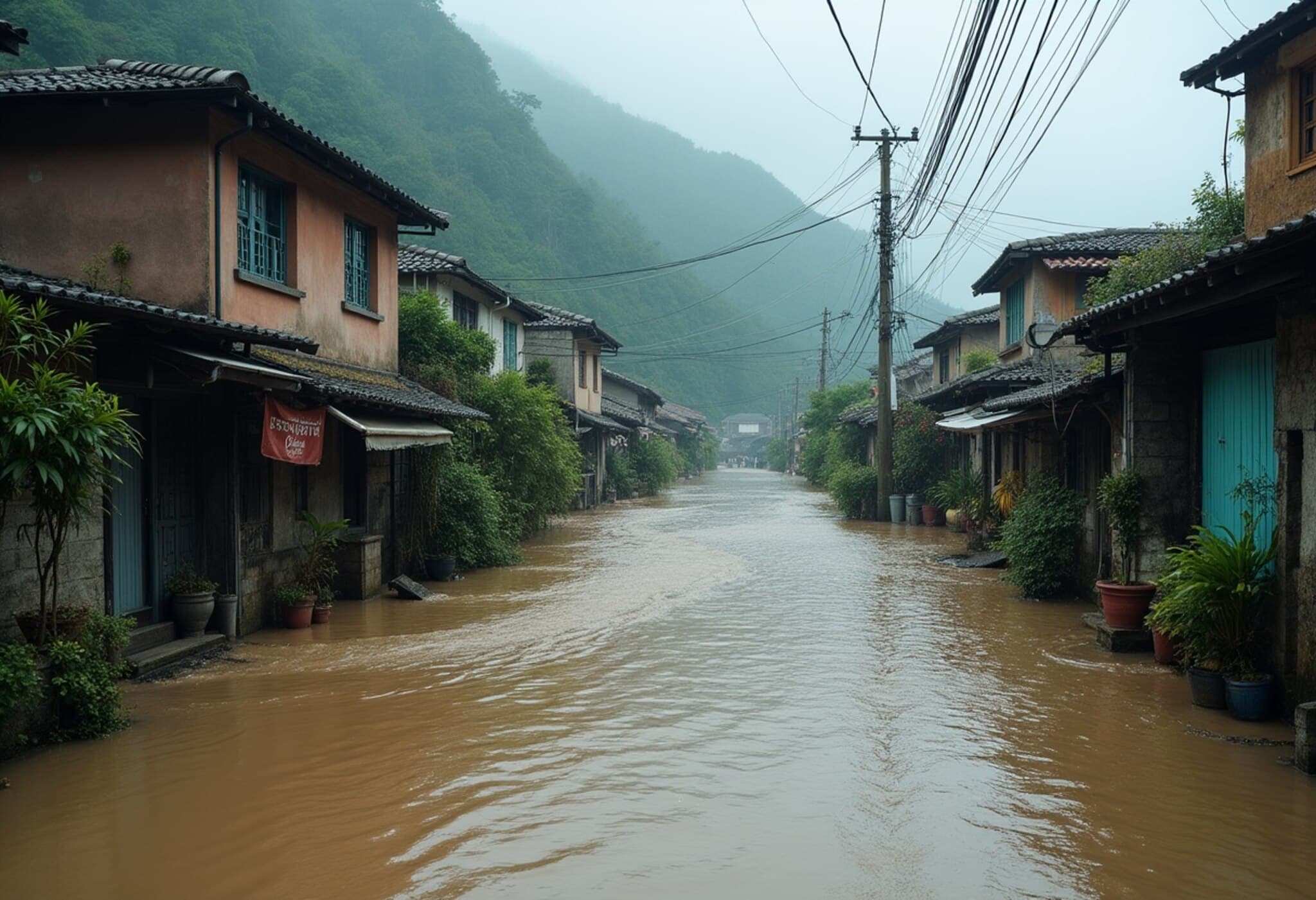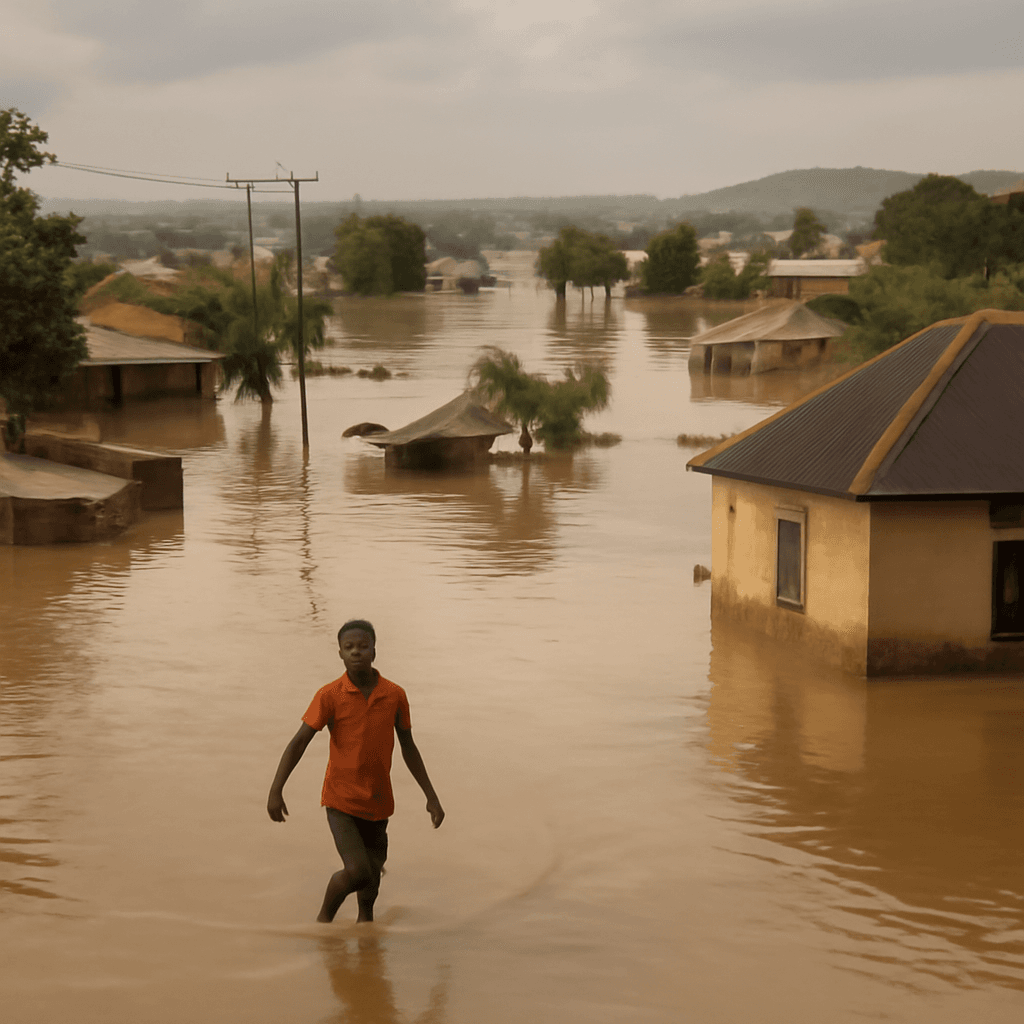Southern Taiwan Faces Unprecedented Flooding and Landslides After Record Rainfall
Southern Taiwan is grappling with severe flooding and landslides following an extraordinary week of relentless rain that dumped over 2.6 meters (102.3 inches) of precipitation in the region—surpassing the annual average rainfall of 2.1 meters. This extreme weather crisis has claimed the lives of four individuals, displaced nearly 6,000 residents, and left three people missing.
Devastating Impact on Communities and Infrastructure
Beginning in late July, a combination of a persistent low-pressure system and strong southwesterly air currents brought continuous heavy rains, disproportionately affecting southern Taiwan’s mountainous terrain. The relentless downpour triggered widespread landslides and extensive flooding in vital agricultural zones, especially across Kaohsiung and Pingtung counties, areas integral to Taiwan’s food production and rural economy.
In the wake of this disaster, over 5,900 residents have been evacuated, many from isolated mountainous villages now cut off due to damaged roads and fallen debris. Rescue teams are still working tirelessly to reopen access routes and deliver critical supplies such as food, medicine, and clean water.
Government Response and Challenges Ahead
Taiwan’s Premier, Cho Jung-tai, visited the hardest-hit city of Tainan to assess the situation and personally reassure affected families. He acknowledged the unprecedented severity of the storm system, stating, "We rarely encounter such a severe storm. It has been a month since Typhoon Danas struck, and continuous rainfall has compounded the challenges."
The government is preparing a special relief package aimed at expediting recovery efforts, focusing on infrastructure repair and support for displaced residents. Kaohsiung’s mayor, Chen Chi-mai, called this event "the largest evacuation in the region in over a decade" and urged the public to avoid venturing into mountainous areas due to ongoing risks.
Typhoon Danas: The Catalyst for Ongoing Crisis
This prolonged flooding crisis is linked to the earlier impact of Typhoon Danas, which struck southern Taiwan’s west coast in July—a relatively rare occurrence. Danas brought record-breaking winds that downed over 3,000 electric poles and caused Taiwan's most significant power grid damage in decades. The typhoon’s aftermath continues to exacerbate the flooding situation as the ground remains saturated and vulnerable to further landslides.
Expert Insights: Preparing for a New Climate Reality
Climate scientists warn that Taiwan’s increasingly erratic weather patterns, characterized by intense typhoons followed by prolonged rainfall, are likely linked to broader shifts in global climate dynamics. For policymakers, this underscores the urgent need to invest in resilient infrastructure, early warning systems, and comprehensive evacuation strategies—especially given Taiwan’s geographic vulnerability as a mountainous island in the Pacific typhoon corridor.
Economic analysts emphasize the potential long-term impact of such disasters on the agricultural sector and rural livelihoods, calling for integrated disaster risk management that balances immediate relief with sustainable development goals.
What Lies Ahead
- Weather officials predict the heavy rains will start to ease from Monday, but risk warnings for landslides and floods in southern mountainous regions remain active.
- Authorities continue to focus on reopening critical transportation routes to facilitate relief distribution and restore normalcy.
- Community resilience efforts and government support will be crucial in the weeks and months ahead to rebuild and mitigate future disasters.
Editor’s Note
The unprecedented rainfall and its devastating consequences in southern Taiwan illuminate the escalating challenges that island nations face amid a changing climate. Beyond immediate rescue missions, this crisis raises important questions about environmental vulnerability, infrastructure resilience, and the socio-economic dimensions of disaster response. Observers and policymakers alike must consider how lessons from Taiwan’s experience can inform global strategies to better prepare for such intensifying weather extremes.













